
As summer fades away and winter approaches, the flowers of numerous plants that have been delighting minds since the beginning of spring say goodbye. Nevertheless, late in the year you don't have to do without pretty and fragrant flowers. There are numerous autumn flowers for your autumn planting in the flower bed or on the balcony, which counteract the dreary autumn weather and are attractively presented in a wide variety of colors and shapes.
autumn flowers
50 beautiful flowers for fall planting
You are looking for fall flowers that will make your garden beyond the autumn time really shines again, attracting birds and the last brave bees and butterflies that still dare to leave the colony at this time? Then you should choose a combination of the fall flowers below for your autumn planting choose to take your garden from summer to colorful autumn. Most of the fall flowers listed grow as flowers, but there are a few species that attract attention as shrubs or woody plants. There is a large selection, which means that autumn planting can be tailored to your taste. Below we list 50 beautiful autumn flowers.
Plants from B to D
Bergenia 'Autumn Blossom' (bot. Bergenia cordifolia 'Autumn Blossom'): this Bergenia is ideal for your autumn planting because, unlike the other varieties, it blooms again in early autumn. The purple-pink flowers then proudly present themselves as a bell in the garden.
 Bergenia 'Autumn Blossom', Bergenia cordifolia
Bergenia 'Autumn Blossom', Bergenia cordifolia
Blue passion flower (bot. Passiflora caerulea): intense blue, a flowering period that lasts until late autumn and the unique flowers that are characteristic of this genus, make the blue passion flower.
 Blue passion flower, Passiflora caerulea
Blue passion flower, Passiflora caerulea
Bush mallow 'Red Rum' (bot. Lavatera clementii 'Red Rum'): these beautiful pink flowers with dark veins are presented from June to October.
 Bush mallow, Lavatera clementii 'Red Rum'
Bush mallow, Lavatera clementii 'Red Rum'
Chrysanthemums (bot. Chrysanthemum): Chrysanthemums are always a real ornament and depending on the variety, the flowering period extends into November. The 'Bienchen', 'Citronella' and 'Schweizerland' are particularly well suited for this.
 Chrysanthemums, Chrysanthemum
Chrysanthemums, Chrysanthemum
Clandon beard (bot. Caryopteris clandonensis): this late bloomer, August to October, has a unique charm and is best suited to Mediterranean garden concepts. The deep, blue color makes the bee pasture popular with gardeners throughout Germany.
 Clandon Beardflower, Caryopteris clandonensis
Clandon Beardflower, Caryopteris clandonensis
Dahlias (bot. Dahlia): Dahlias are classic autumn flowers that bloom into October and even survive the first few days of frost. Here you have the choice of many shades, ranging from pure white to yellow and pink to red and dark purple.
 Dahlias, Dahlia
Dahlias, Dahlia
Plants from E to H
Centaury (bot. Centaurium erythraea): bears pink star-shaped flowers, rarely white, from mid-June to mid-September. A real eye-catcher.
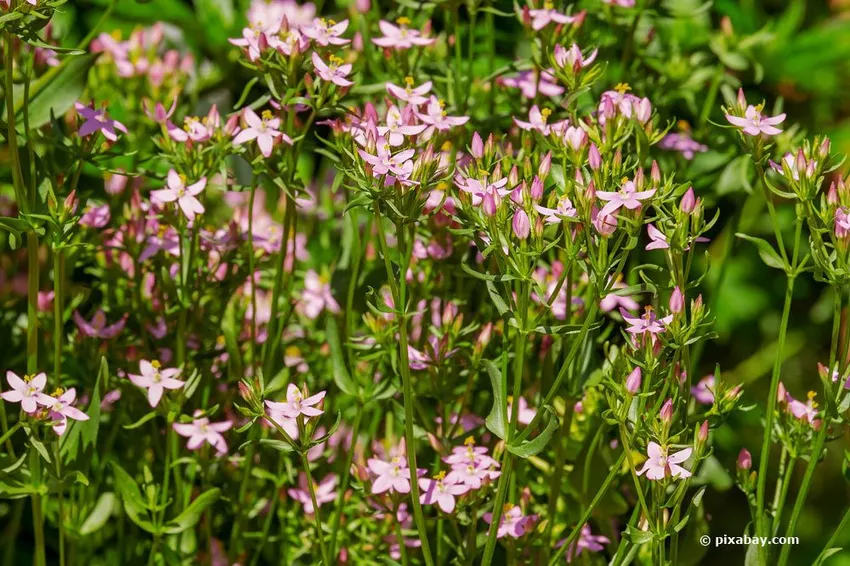 Centaury, Centaurium erythraea
Centaury, Centaurium erythraea
Ivy-leaved cyclamen (bot. Cyclamen hederifolium): the ivy-leaved cyclamen only begins to flower in August and continues to flower until October. The plant with the flowers in light or dark pink comes from the north of the Mediterranean region and attracts with a gentle scent.
 Ivy-leaved Cyclamen, Cyclamen hederifolium
Ivy-leaved Cyclamen, Cyclamen hederifolium
Garden marshmallow 'Helene' (bot. Hibiscus syriacus 'Helene'): a classic hibiscus that blooms from July to September and delights gardeners with its large, pink-white flowers.
 Garden marshmallow, rose marshmallow, Hibiscus syriacus
Garden marshmallow, rose marshmallow, Hibiscus syriacus
Garden gladiolus (bot. Gladiolus hortulanus): the garden gladioli are excellent as autumn flowers in September and October. They come in all sorts of colors and the numerous varieties all bloom at different times, which allows a combination of different gladioli.
 Gladioli in different shades of color in the bed
Gladioli in different shades of color in the bed
Garden pansies (bot. Viola tricolor var. hortensis): who doesn't know it, the pansy. They come in a wide range of colors and bloom in October and November as long as they are sown in summer. A classic among flowers par excellence.
 Pansies, violets, viola tricolor
Pansies, violets, viola tricolor
Large-leaved clematis (bot. Clematis heracleifolia): this slow bloomer presents its flowers from March to October. The small, dark purple flowers with the characteristic shape will attract everyone's attention.
 Large-leaved clematis, Clematis heracleifolia
Large-leaved clematis, Clematis heracleifolia
Heather (bot. Erica): The flowering time of the heather differs depending on the species. We recommend the bell heather (bot. Erica tetralix) with pink flowers in September and the common heather (bot. Calluna vulgaris) with pink to purple flowers into November .
 Heather family, Ericaceae
Heather family, Ericaceae
Autumn anemone (bot. Anemone hupehensis): the Anemone hupehensis joins the group of flowers with white to red, mainly pink, flowers and blooms from July to October. It actually comes from East Asia, but was cultivated early on.
 Autumn Anemone, Anemone hupehensis
Autumn Anemone, Anemone hupehensis
Autumn asters (bot. Symphyotrichum): the name alone suggests that these asters are perfect for your autumn planting. They bloom until October with many flowers in white, pink, violet or blue and are often visited by insects, especially butterflies.
 Autumn Aster, Symphyotrichum
Autumn Aster, Symphyotrichum
Autumn squill (bot. Scilla autumnalis): this squill is a delight to the eye and displays a gorgeous purple or pink hue throughout September.
 Autumn Squill, Scilla autumnalis
Autumn Squill, Scilla autumnalis
Monkshood (bot. Aconitum carmichaelii): Despite its toxicity, Aconitum carmichaelii is one of the absolute highlights of every autumn planting. The autumn flowers show their large, striking flower caps especially in October and thus provide a decorative aspect in the garden.
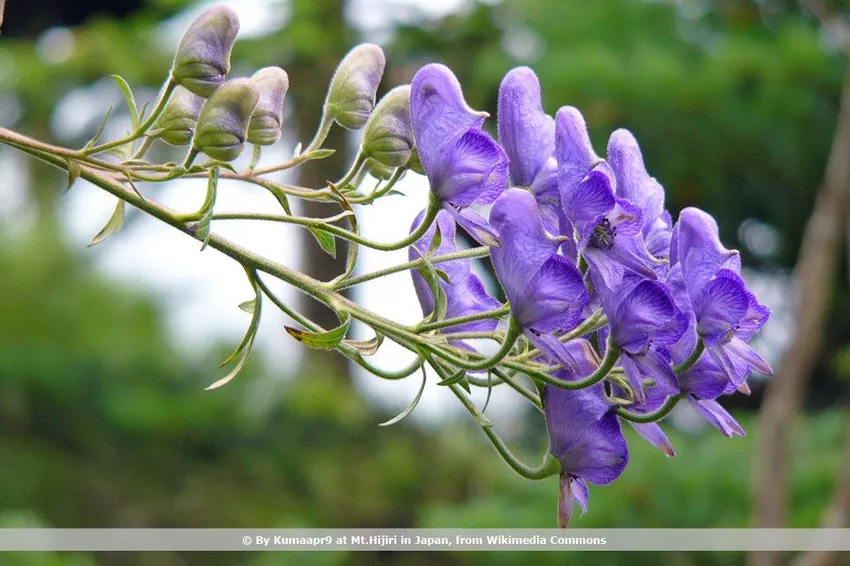 Autumn monkshood, Aconitum carmichaelii
Autumn monkshood, Aconitum carmichaelii
Autumn Goldcup (bot. Sternbergia lutea): these flowers originally come from the Mediterranean region and impress with their bright yellow color. The flowers are up to 1.5 centimeters wide and appear from mid-September to mid-October.
 Autumn Goldcup, Sternbergia lutea
Autumn Goldcup, Sternbergia lutea
Autumn crocus (bot. Colchicum autumnale): the poisonous autumn crocuses are often cultivated despite their dangerous ingredients because of the violet, rarely white, flowers. The flowering period extends from the beginning of September to the end of October.
 Autumn crocus, Colchicum autumnale
Autumn crocus, Colchicum autumnale
Tall stonecrop (bot. Sedum telephium): these particularly hardy plants cannot be missing among the autumn flowers. Above all, the hybrid 'Herbstfreude' should be mentioned here, which only begins to bloom in mid-August and presents brown-red flowers until the end of September.
 Tall stonecrop, Sedum telephium xenox
Tall stonecrop, Sedum telephium xenox
Tall Gold Sheaf 'Credo' (bot. Achillea filipendulina 'Credo'): these flowers bloom long into October and seduce with their golden yellow umbels.
 Tall Gold Sheaf, Achillea filipendulina
Tall Gold Sheaf, Achillea filipendulina
Horned violet (bot. Viola cornuta): the horned violet also belongs to the genus Viola and presents itself with light to dark violet flowers, depending on the variety. Most of the varieties bloom from May to mid-September, while late-blooming varieties delight with a second bloom in October.
 Horned violet, Viola cornuta
Horned violet, Viola cornuta
Hydrangeas (bot. Hydrangea): Hydrangeas are also found in many gardens and easily last until mid or late September. However, they are extremely sensitive to frost.
 Hydrangea, Farmhouse Hydrangea, Hydrangea
Hydrangea, Farmhouse Hydrangea, Hydrangea
Plants from I to L
Indian cane (bot. Canna indica): an autumn flower that is particularly striking in rich white, orange or red from June to mid-October due to the spiked-shaped flowers.
 Indian flower cane, Canna indica
Indian flower cane, Canna indica
Alstroemeria (bot. Alstroemeria): the Alstroemeria offer a breathtaking play of colors that illustrate their origin in South America. It flowers from June to October.
 Alstroemeria, Alstroemeria
Alstroemeria, Alstroemeria
Japanese slate (bot. Begonia grandis ssp. evansiana): the Japanese slate leaf is a begonia that enchants with its exotic-looking flowers even into November. These are kept in an attractive white or soft pink.
 Japan slate leaf, Begonia grandis
Japan slate leaf, Begonia grandis
Caucasian Germander 'Paradise Delight' (bot. Teucrium hyrcanicum 'Paradise Delight'): with this Caucasus germander you can look forward to a perennial with a lot of character. The intense crimson ones look good in combination with other plants that bear spikes. The flowering period is from May to late October.
 Sage Germander, Teucrium scorodonia
Sage Germander, Teucrium scorodonia
Smallflowered Calamint 'Triumphator' (bot. Calamintha nepeta 'Triumphator'): the small flowers of light white or violet are arranged in spikes. She has a lovely scent that can be enjoyed during the flowering period from June to late September.
 Small-flowered calamint, Calamintha nepeta
Small-flowered calamint, Calamintha nepeta
button bush (bot. Cephalanthus occidentalis): the button bush is a unique sight from mid-July to late September. The large, white flower balls are popular with butterflies.
 Button bush, Cephalanthus occidentalis
Button bush, Cephalanthus occidentalis
Lantern flower (bot. Physalis alkekengi): the physalis is mostly known for its fruits, but the beauty of the small, lovely white flowers should not be underestimated. It blooms loosely into September and then bears fruit.
 Lantern flower, Cape gooseberry, Physalis alkekengi
Lantern flower, Cape gooseberry, Physalis alkekengi
Plants from M to P
Monthly strawberry 'Alexandria' (bot. Fragaria vesca var. semperflorens): the strawberry of the month has lovely white flowers that grow back again and again from May to the end of September and also produce sweet strawberry fruits.
 Wild Strawberry, Fragaria vesca
Wild Strawberry, Fragaria vesca
Chaste tree (bot. Vitex agnus-castus): the monk's pepper is a true star among the autumn flowers and blooms more than almost any other plant. Its labial flowers in light purple appear healthy over September and October.
 Chaste tree, Vitex agnus-castus
Chaste tree, Vitex agnus-castus
October Saxifrage (bot. Saxifraga cortusifolia var. fortunei): as the name suggests, flowers mainly in October, although the flowers of the saxifrage can appear as early as September. The elegant pink and white flowers are a real feast for the eyes.
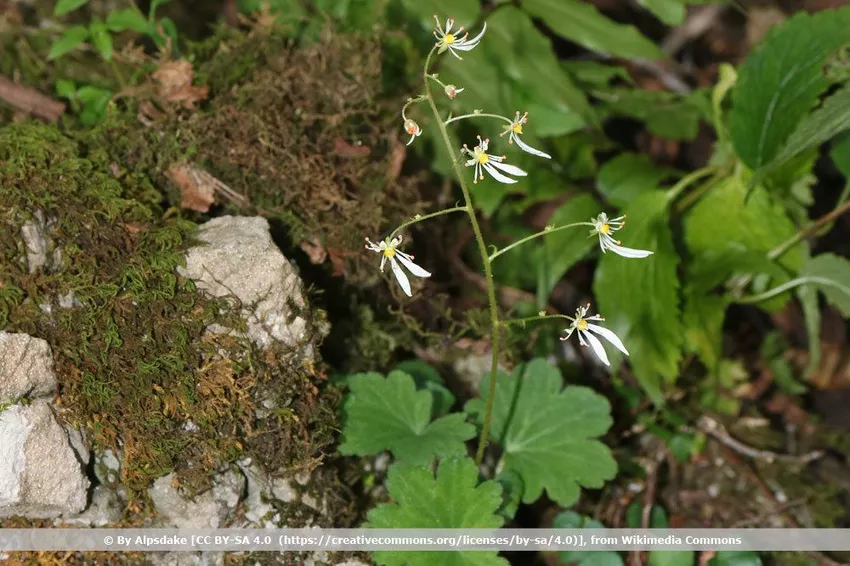 October Saxifrage, Autumn Saxifrage, Saxifraga cortusifolia
October Saxifrage, Autumn Saxifrage, Saxifraga cortusifolia
Purple bells (bot. Heuchera): the purple bells presents itself in an intense purple and blooms with small flowers until September. These autumn flowers don't lose the color of their leaves even in winter, which counteracts the dreary gray of the cold season.
 Purple bells, Heuchera
Purple bells, Heuchera
Autumn crocus (bot. Crocus speciosus): Crocus speciosus is also an attractive crocus and also comes in a different colour: a blue purple. The flowering period extends from September to November.
 Autumn crocus, Crocus speciosus
Autumn crocus, Crocus speciosus
Plants from R to S
Rose autumn crocus (bot. Crocus pulchellus): this crocus blooms from mid-September until late November. The color of the flower, which is reminiscent of lavender, inspires.
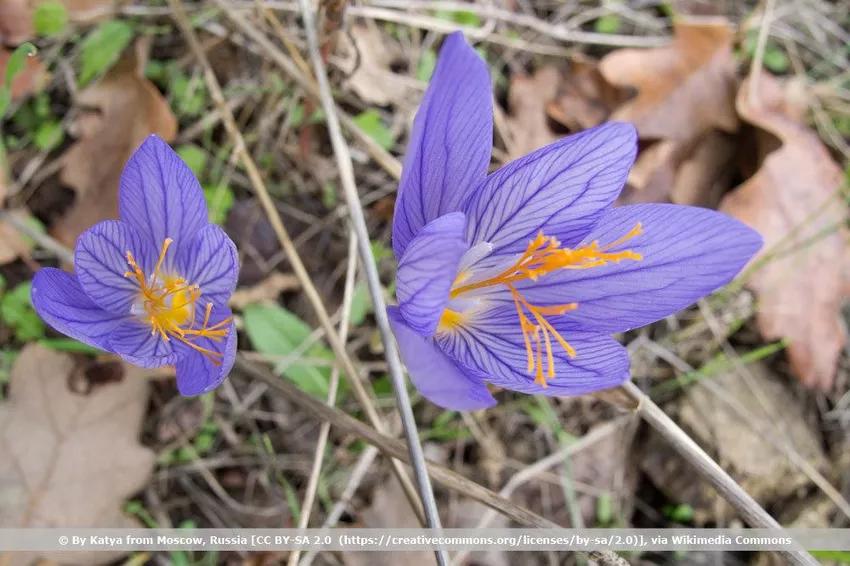 Rose Autumn Crocus, Crocus pulchellus
Rose Autumn Crocus, Crocus pulchellus
Round-leaved bellflower (bot. Campanula rotundifolia): the elegant, almost fairy-like purple-blue calyxes are still upright at the beginning of the flowering period in June, but then bend down in September. A fairytale sight.
 Round-leaved bellflower, Campanula rotundifolia
Round-leaved bellflower, Campanula rotundifolia
Saffron crocus (bot. Crocus sativus): one of the crocus species that present themselves in autumn, especially in September. With the lilac-colored flowers, they immediately catch the eye. The spice of the same name, which is the most expensive in the world, is obtained from this plant.
 Saffron Crocus, Crocus sativus
Saffron Crocus, Crocus sativus
Garden speedwell 'Ulster Blue Dwarf' (bot. Veronica spicata 'Ulster Blue Dwarf'): blooms from June to the end of October. The compact growth really shows off the blue spikes.
 Garden speedwell, Veronica spicata 'Red Fox'
Garden speedwell, Veronica spicata 'Red Fox'
Seven Sons of Heaven Shrub (bot. Heptacodium miconioides): this shrub flowers from August to October with small, white flowers and is also considered a bee plant. That said, bees and bumblebees will definitely visit these fall flowers.
 Seven Sons of Heaven Shrub, Heptacodium miconioides
Seven Sons of Heaven Shrub, Heptacodium miconioides
Sunflower (bot. Helianthus annuus): another classic. The sunflower is one of the favorites among the large plants and requires quite a lot of space. However, their sun-yellow flowers delight from July to the end of September.
 Sunflower, Helianthus annuus
Sunflower, Helianthus annuus
Coneflowers (bot. Echinacea): Coneflowers typically bloom from July to mid-September, but daisies will continue blooming until October if it's warm enough. They are striking because of the hedgehog heads, the flower baskets that seem to be stretching towards the last sun in autumn.
 Coneflower, Echinacea
Coneflower, Echinacea
Late autumn sage (bot. Salvia azurea var.grandiflora): a classic sage that flowers in bright blue from September to October and is even fragrant.
 Late Autumn Sage, Salvia azurea
Late Autumn Sage, Salvia azurea
Cranesbill 'Patricia' (bot. Geranium psilostemon 'Patricia'): These fall flowers are known for their bright purple blooms that can be seen from June to mid-September.
 Cranesbill, Geranium psilostemon
Cranesbill, Geranium psilostemon
Shrubby evening primrose (bot. Calylophus serrulatus): flowers long into October and is plentiful with cup-shaped flowers in an intense yellow.
 Shrubby evening primrose, Calylophus serrulatus
Shrubby evening primrose, Calylophus serrulatus
Marigolds (bot. Tagetes): Marigolds are very popular in autumn and will flower easily in September if the care is right. The blooming delights with flowers in strong orange-red.
 Marigold, marigolds with bright flowers
Marigold, marigolds with bright flowers
Marsh Ziest (bot. Stachys palustris): the swamp ziest flowers until late September. The red-violet flowers can be admired especially in close proximity to other plants.
 Marsh Ziest, Stachys palustris
Marsh Ziest, Stachys palustris
Plants from W to Z
White toadflax (bot. Linaria purpurea 'Alba'): the flowers of the white toadflax are kept in a breathtaking pure white and filigree shaped. With good care, you can enjoy the flowers until November.
 White toadflax, Linaria purpurea
White toadflax, Linaria purpurea
Wild mallow (bot. Malva sylvestris): of this species there are different varieties with different colors. But they have one thing in common: the flowering period from May to September.
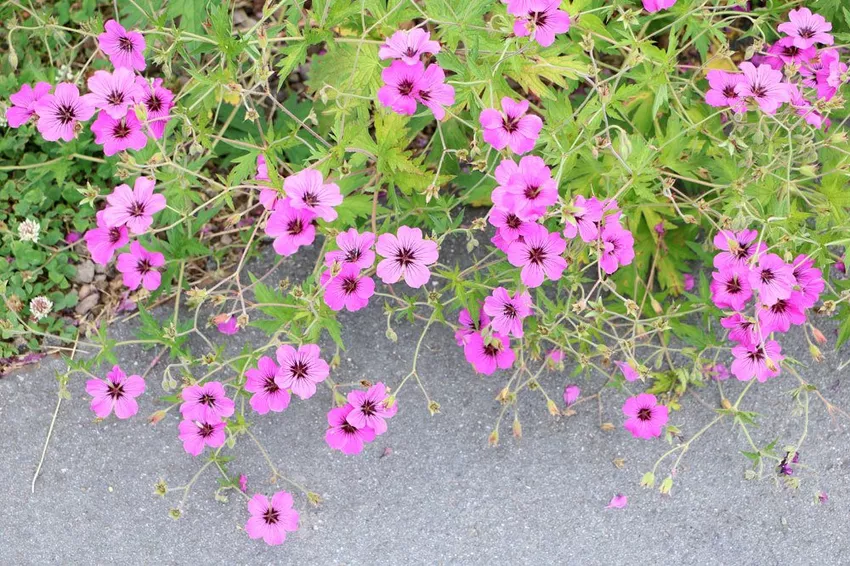 Wild mallow, Malva sylvestris
Wild mallow, Malva sylvestris
Zinnia (bot. Zinnia elegans): wonderfully appealing flowers ranging in hues from white through red and yellow to violet. They bloom in full bloom throughout the summer until October.
 Zinnia, Zinnia elegans
Zinnia, Zinnia elegans
Just those joy of combination is what makes the use of autumn flowers so popular for your own autumn planting. The individual flowers are ideal for the different gardens and balconies, regardless of whether you prefer a romantic, English garden or prefer a well-tended wild growth. The possibilities are with the 50 autumn flowers uniquely diverse and when choosing the autumn flowers you will definitely come up with ideas on how to integrate them. Color gradients in particular are welcome, as the number of blue, pink and violet flowers predominates over the autumn period.
Tip: In certain genera, such as heather herbs, there are several species that begin to bloom throughout the autumn or are still adorned with their flowers from summer. You can then choose, for example, one of the species that flowers towards late summer, one species that flowers at the beginning of autumn and one towards the end of autumn or even into winter, in order to have an attractive display of flowers in your own garden or on the balcony almost all year round to have.